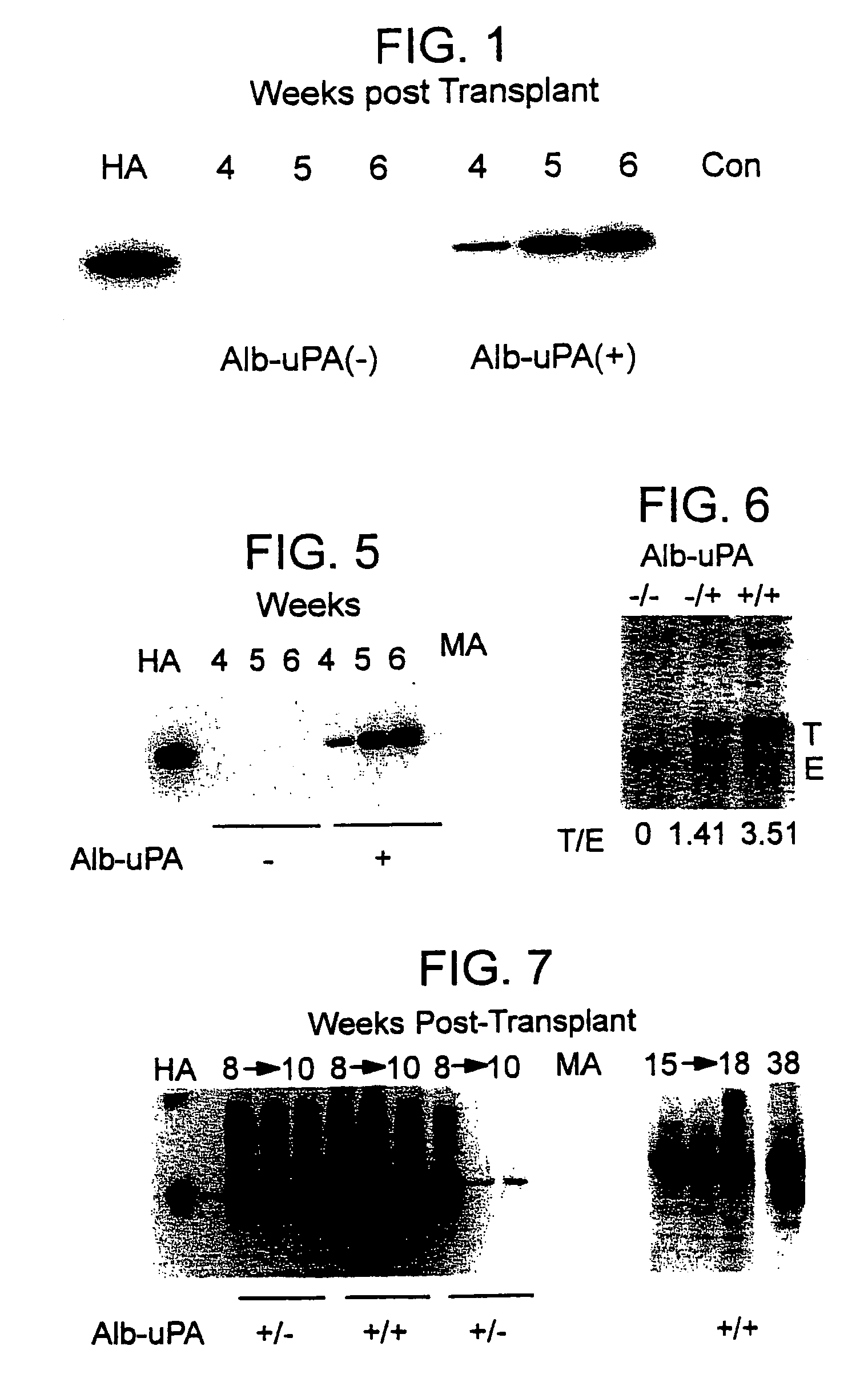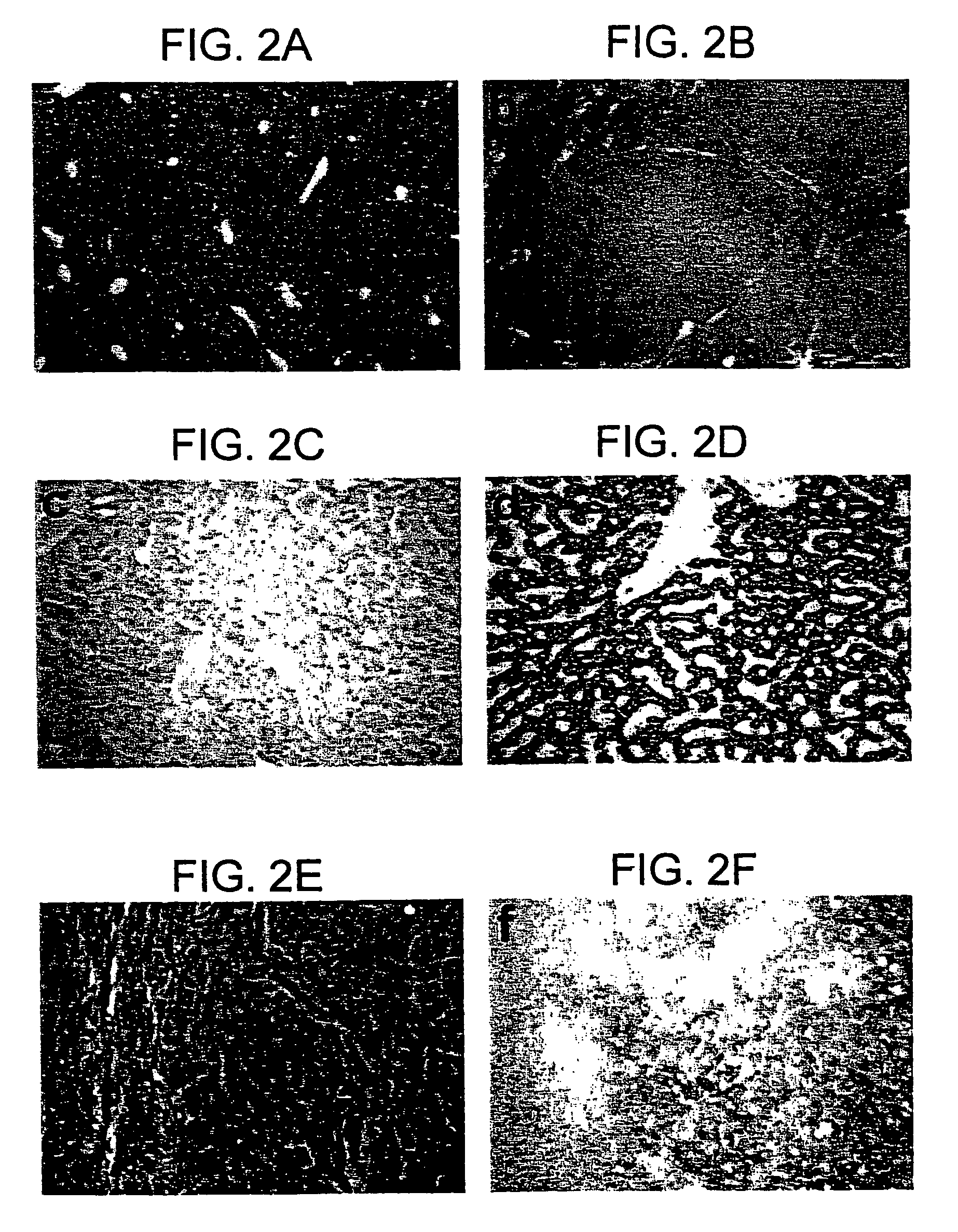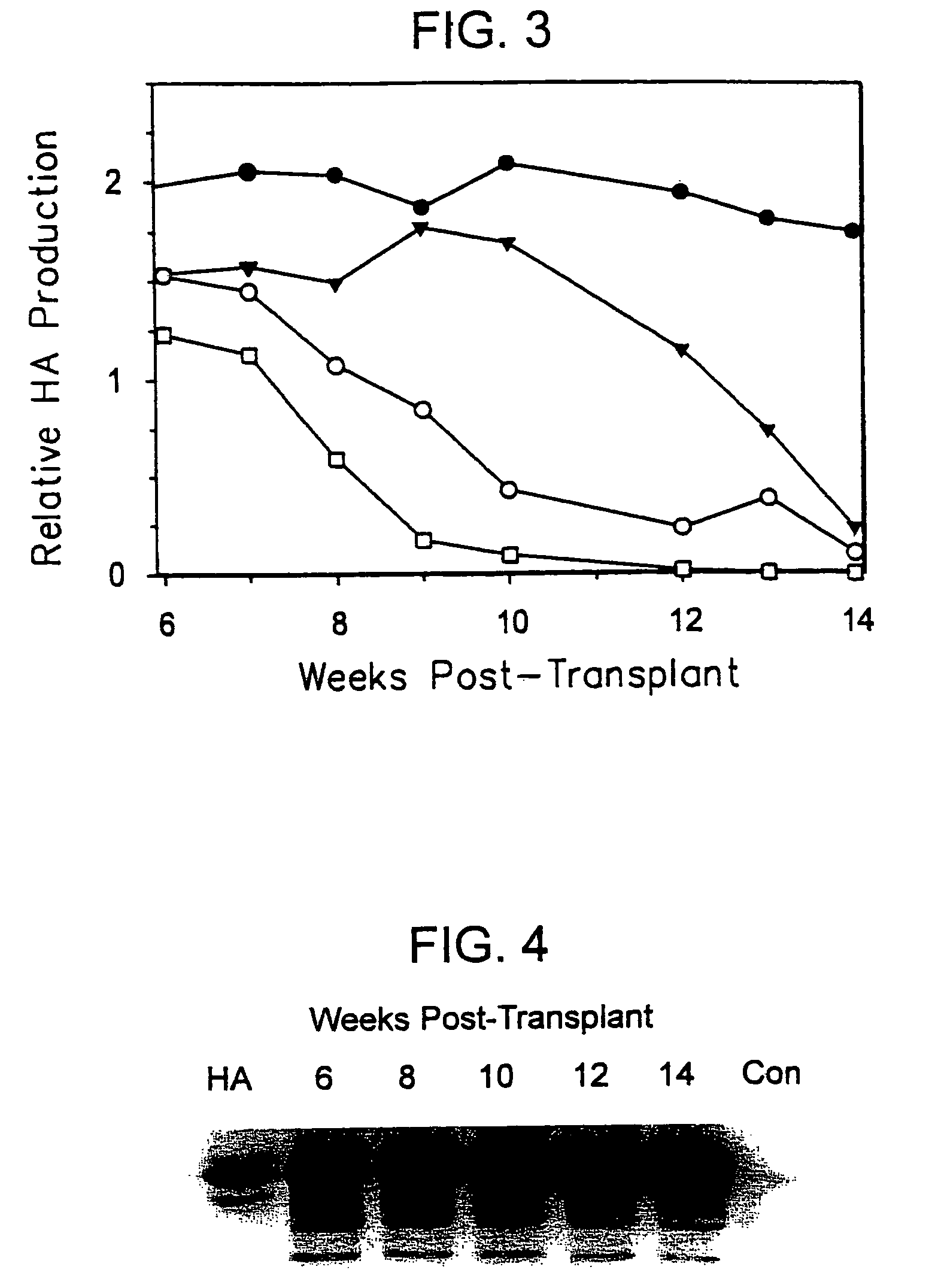Animal model having a chimeric human liver
a human liver and animal model technology, applied in the field of animals, can solve the problems of reproducible small animal models for hcv infection, severe hiccups in the study of various immune factors, and lack of robust cost-effective animal models
- Summary
- Abstract
- Description
- Claims
- Application Information
AI Technical Summary
Benefits of technology
Problems solved by technology
Method used
Image
Examples
example 1
Production of Alb-uPA Transgenic Mice
[0100]To generate an Alb-uPA transgenic mouse tolerant to human tissue grafts, mice heterozygous for the transgene (strain TgN(Alb1Plau)144Bri (The Jackson Laboratory)) were crossed with animals from a C.b-17 / SCID-beige lineage (strain C.b-17 / GbmsTac-scid-bgN7 (Taconic Farms), homozygous). Through a series of backcrosses, the SCID-beige trait was bred to homozygosity as confirmed by quantification of total serum IgG using a sandwich ELISA technique to detect mouse IgG according to methods well known in the art. Quantification of IgG was calculated from a standard curve prepared on each plate using a mouse IgG standard (Cappel). “Leakiness” of the SCID-beige trait was defined as >1% of normal serum IgG (Bosma et al. Ann. Rev. Immun. 9:323 (1991)); animals with serum IgG levels above this cutoff were euthanised. At each step, animals carrying the Alb-uPA transgene were identified by PCR analysis of genomic DNA extracted from tail biopsies, using tw...
example 2
Persistence and Proliferation of Engrafted Human Hepatocytes
[0114]To determine the long-term outcome of initial successful engraftment and proliferation, a second litter of 8 animals was transplanted in similar fashion. The hepatocytes available for use at the time of this experiment were obtained from a patient who was a chronic carrier of hepatitis B virus. The patient exhibited both a positive serum HBsAg levels and negative serum HBV DNA, indicating a chronic carrier state without active viral replication (Davis, South. Med. J. 90:866 (1997)).
[0115]Two randomly selected animals were sacrificed at 4 weeks for histologic analysis, and the remaining 6 animals were followed at weekly intervals. Serum samples were subjected to Western blot as described above, and the HA bands from Western blots quantified using image analysis software and band densitometry (Umax Astra 1200S scanner and VistaScan DA v.1.2.2 imaging software (UMAX Copr, Fremont, Calif.). Quantification of HA peaks was ...
example 3
Establishing Primary HCV Infection
[0124]The success above in production of a chimeric animal that supports HBV replication in the chimeric mouse supports the use of the animal as a model of HBV. However, the vast differences between HBV and HCV discussed above (Background) meant that there could be no reasonable expectation that the animal model would be susceptible to HCV infection through a normal route of infection (e.g., intravenous transmission) or that the chimeric liver could support an active HCV infection, particularly in view of the failure of others to develop HCV animal models and the rarity of cell systems for HCV. The comparative success with HBV animals models and the repeated failures of others with HCV animal models indicate that one can not simply extrapolate from HBV to HCV. Thus, an attempt was made to establish a primary HCV infection in mice with chimeric livers using virally-infected human serum.
[0125]Seven littermates were transplanted at 7 days of age with h...
PUM
 Login to View More
Login to View More Abstract
Description
Claims
Application Information
 Login to View More
Login to View More - R&D
- Intellectual Property
- Life Sciences
- Materials
- Tech Scout
- Unparalleled Data Quality
- Higher Quality Content
- 60% Fewer Hallucinations
Browse by: Latest US Patents, China's latest patents, Technical Efficacy Thesaurus, Application Domain, Technology Topic, Popular Technical Reports.
© 2025 PatSnap. All rights reserved.Legal|Privacy policy|Modern Slavery Act Transparency Statement|Sitemap|About US| Contact US: help@patsnap.com



